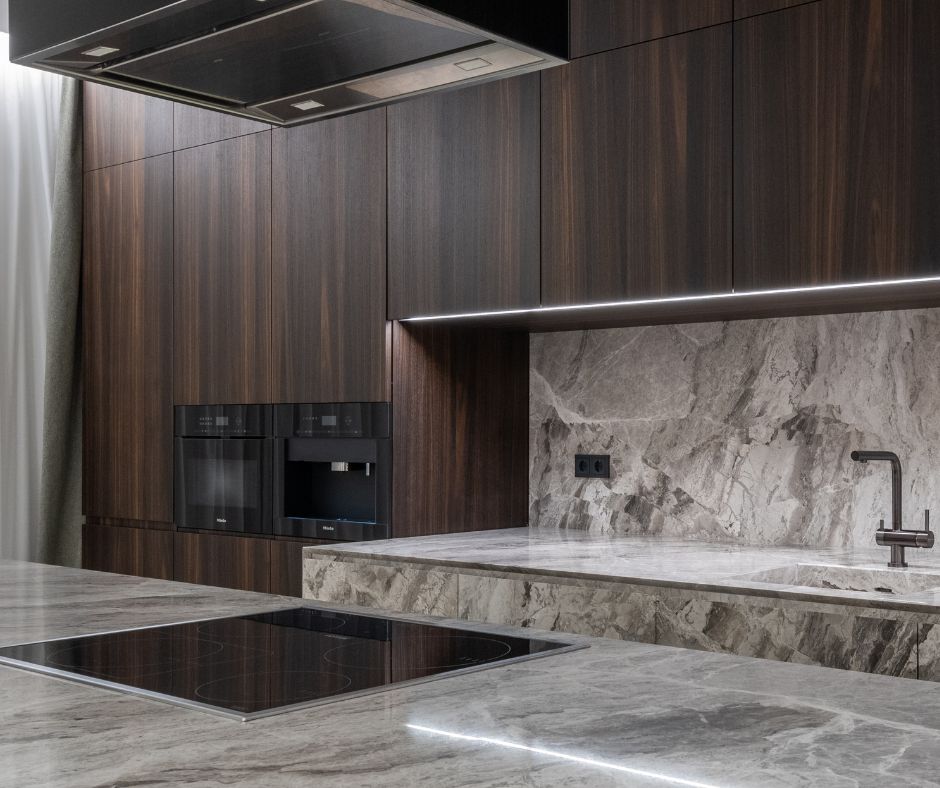The evolution of modern kitchens is a testament to the way in which induction cooking technology is reshaping culinary practices and fostering innovative traditions. Although this technology might appear to be a recent phenomenon, its inception dates back to the early 20th century. The first demonstrations in the 1930s mesmerised audiences, showcasing the astonishing capacity to boil water using magnetic energy, all without a visible heat source. However, it is only in the last few decades, driven by significant advancements in technology, efficiency, and design, that induction cooktops have firmly established their significance in contemporary kitchens.
Today, a growing number of home chefs and culinary enthusiasts are embracing induction cooking due to its captivating combination of sleek aesthetics, exceptional precision, and unmatched energy efficiency. This revolutionary cooking method not only accelerates meal preparation but is also transforming the art of home cooking. It beautifully merges the science of heat management with culinary creativity, enhancing every dish prepared on its elegant, polished surface. The right induction cooktop can rival the speed of a microwave, allowing you to create delightful family meals in no time!
Harnessing the Power of Precision Cooking to Enhance Flavor and Nutrition
Unlike traditional gas or electric ranges, induction cooktops directly heat cookware through the use of electromagnetic energy. This groundbreaking approach eliminates wasted heat, wards off burnt edges, and provides exceptional control over temperature settings, whether high or low. When you can manage heat with such precision, your ingredients retain more of their natural moisture, flavour, and nutritional integrity. Whether you're flash-searing proteins, gently simmering sauces, or swiftly blanching vegetables, induction cooking simplifies the quest for perfect results while avoiding overcooked meals and nutrient loss.
Discover Stylish Induction Cooktops: Optimising Space and Reducing Culinary Stress
In kitchens where every square centimetre is precious, induction cooktops shine not only in performance but also in design. Their flat, smooth surfaces effortlessly integrate into your countertop, cultivating a minimalist aesthetic that creates additional space for food preparation, plating, or even enjoying casual meals with family and friends.
Unlike conventional gas hobs, which feature bulky grates and protruding burners, induction cooktops sit flush against the countertop. While ceramic stovetops might provide a sleeker appearance, they often remain dangerously hot long after cooking has concluded, posing safety risks.
In stark contrast, induction surfaces cool down rapidly once the cookware is removed. The heat is generated by the magnetic interaction between the cooktop and the cookware, rather than by the cooktop itself, meaning that the glass surface retains significantly less heat. This feature not only simplifies cleaning but also enhances safety during cooking, making it particularly advantageous for households with curious children or pets who might venture near the kitchen counters.
The result? A cooler kitchen with cleaner lines and increased flexibility—the perfect solution for modern cooks who appreciate both aesthetics and functionality.

A Comprehensive Guide to Choosing the Right Cookware for Induction Cooking
Shifting to induction cooking may come with the bittersweet realisation that you might need to part ways with some beloved old pans. Since induction technology depends on magnetic energy for heat generation, not all pots and pans will be compatible with this method.
For cookware to function effectively on an induction cooktop, it must be crafted from ferrous (magnetic) metals, such as cast iron, carbon steel, or magnetic-grade stainless steel. A simple fridge magnet test can determine compatibility: place a magnet on the base of the pan. If it adheres firmly, you’re good to go.
When selecting new cookware, opt for pans featuring a heavy, flat base. This design guarantees optimal contact with the cooktop, delivering even heat distribution critical for achieving perfect browning, tender roasts, and crispy edges. Furthermore, top-quality induction cookware is specifically designed to resist warping over time, ensuring consistent cooking performance for every meal.
Although it may be difficult to say goodbye to old favourites, view it as an upgrade. In exchange, you gain enhanced control, faster cooking times, and dishes that offer even richer flavours and textures.
Induction Cookware Quick Checklist: Essential Tools for Successful Cooking
 Conduct a fridge magnet test—strong adhesion indicates induction compatibility
Conduct a fridge magnet test—strong adhesion indicates induction compatibility Prefer flat-bottom pans for optimal contact and heat distribution
Prefer flat-bottom pans for optimal contact and heat distribution Select cast iron, carbon steel, or magnetic stainless steel cookware
Select cast iron, carbon steel, or magnetic stainless steel cookware Avoid cookware composed solely of copper, aluminium, or glass unless explicitly marked for induction
Avoid cookware composed solely of copper, aluminium, or glass unless explicitly marked for induction Look for the induction symbol (resembling a horizontal coil or a series of loops) stamped on the base or package
Look for the induction symbol (resembling a horizontal coil or a series of loops) stamped on the base or package
Pro Tip: The induction symbol typically resembles a zigzag or spring coil graphic, making it easy to spot. Identifying this symbol ensures cookware compatibility.
Essential Installation Considerations for Your Induction Cooktop
Before you embark on your culinary adventure with your new cooktop, several installation essentials must be carefully considered:
-
Professional Installation Is Crucial: Induction units often require dedicated electrical circuits and specific clearances. It is essential to engage professionals who are knowledgeable about these requirements.
-
Hire a Licensed Electrician: Wiring a high-powered induction cooktop is not a task for DIY enthusiasts.
Learn why hiring a qualified electrician is essential. -
Confirm Your Power Setup: Certain induction models require significant power. Prior to making a purchase, verify that your wiring meets the cooktop’s specifications.
Proper installation not only guarantees optimal performance but also ensures safety and longevity.
Key Insights on the Benefits of Induction Cooking
Induction cooking offers more than just speed or safety—it’s fundamentally intelligent. With the right cookware and a professionally installed system, you can create better-tasting meals, achieve richer textures, and enjoy healthier options, meal after meal. In today’s modern kitchens, precision cooking is not merely a preference; it has evolved into the new standard.
Frequently Asked Questions About Induction Cooktops
1. What Makes Induction Cooktops Superior to Gas or Electric Alternatives?
Induction cooktops offer instant heat control, superior energy efficiency, and enhanced safety features. Since they heat the cookware directly, meals cook more swiftly with reduced energy waste, and the surfaces remain cooler, minimising the risk of burns.
2. Can I Continue Using My Existing Pots and Pans on an Induction Cooktop?
Only if they are magnetic. Cookware made from cast iron or magnetic stainless steel is ideal for induction cooking. You can easily check compatibility by placing a magnet on the base—if it adheres firmly, it’s suitable for induction use.
3. Does Induction Cooking Affect the Flavour of Food?
Yes, and in a beneficial manner. Induction cooking facilitates precise temperature control, allowing you to sear, sauté, or simmer without overheating, thus preserving the natural flavours, textures, and nutrients far more effectively than traditional gas or electric heat.
4. Is Special Wiring Necessary for an Induction Cooktop?
Most induction cooktops require a dedicated electrical circuit along with specific voltage and amperage configurations. It is vital to have a professional electrician evaluate and install your wiring to ensure compliance with safety regulations and to guarantee optimal performance.
The post The Secret Ingredient in Modern Kitchens: Induction Cooktops Are Changing the Game appeared first on https://cookinggods.com
The Article Induction Cooktops: The Game-Changer in Modern Kitchens Was Found On https://limitsofstrategy.com


Your exploration of induction cooking technology brings up fascinating points about the intersection of innovation and tradition in the culinary world. It’s intriguing to consider how a method that seemed so futuristic in the early 20th century is now reshaping our daily cooking experiences. Personally, I’ve found the precision of induction cooking compelling, particularly in terms of temperature control when creating delicate sauces or sautéing vegetables. It’s a small detail, but that level of precision can significantly elevate home cooking.
It’s fascinating how the evolution of cooking technology can inspire such a rich dialogue about our culinary experiences. The precision you mentioned really does change the game in the kitchen, particularly when it comes to delicate dishes. I often find myself thinking about how traditional methods, like using a gas flame, require a certain instinct and intuition that induction cooking can complement with its exact temperature control.
“Glad to hear you resonate with the precision of induction cooking! If you’re interested in exploring some top-rated induction cooktops that can elevate your culinary creations, check out this link.”
https://living-thrifty.com/trustindex
You make a great point about the fusion of innovation and tradition. It’s fascinating to think about how induction cooking has bridged that gap. The precision you mentioned really can elevate meals; being able to finely control heat is like having a professional kitchen at home. It’s such a game changer for making those delicate sauces or just getting the perfect sear. Plus, it’s interesting to see how chefs are adapting traditional recipes while harnessing this modern tech. Have you tried using induction for anything unexpected, like a dessert? It opens up some cool possibilities!
“I’m glad you found the insights on induction cooking compelling! If you’re interested in learning more about how to elevate your culinary skills with this innovative technology, check out this guide for tips and techniques.”
https://living-thrifty.com/ParentAler